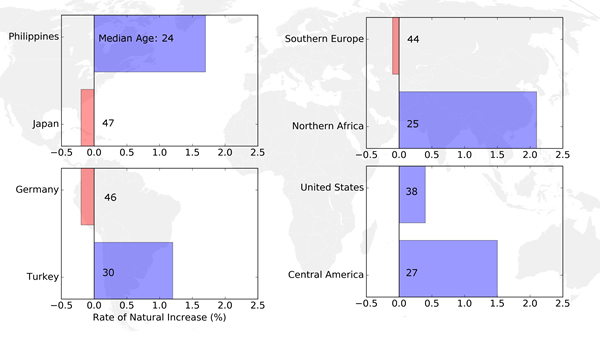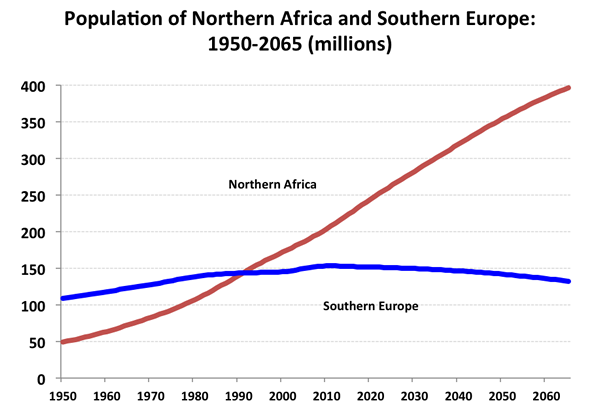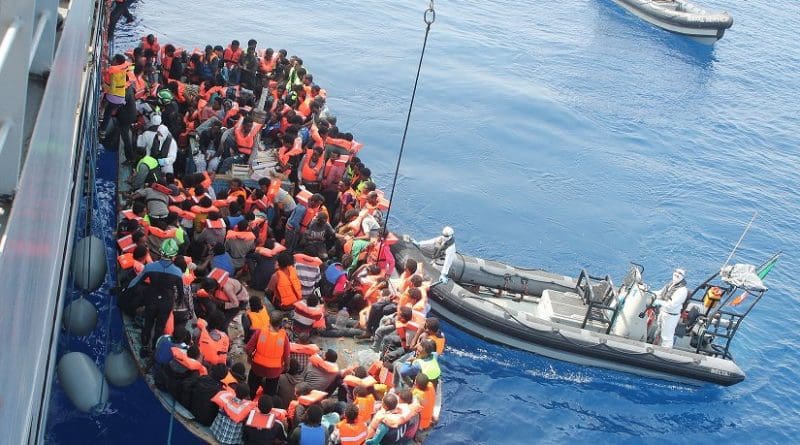Migration Trend: Young And Poor Move To Lands Of Aging Rich – Analysis
Median age gaps of 10 years and more between sending and receiving nations add to migration pressures.
By Joseph Chamie*
Unmanageable migration at international borders has become increasingly burdensome and, as the Brexit vote shows, even explosive. In principle, the worldwide system of international migration operates on globally established treaties, conventions and rights. In practice, growing numbers of people in virtually every region of the world ignore recognized principles, policies and procedures to cross borders unlawfully. Recently a majority of British people voted to shut the door.
Age differences between sending and receiving nations are a powerful force exerting migratory pressures on borders. Any reforms to reduce border crossing must consider the impact of age differences on culture, economies, politics and security.
While the populations of most receiving countries are considerably older, increasing slowly or declining, the populations of sending countries have relatively young age structures and grow comparatively rapidly. For example, while the United States with a median age of 38 years has a rate of natural increase of 0.4 percent, the population of Central America has a median age of 27 years and is growing nearly four times as fast, or 1.5 percent.
Without the inflow of young migrants, the US workforce in a half century would be 10 percent smaller than it is today, a reduction close to 20 million, and the proportion aged 65 years or older would increase from about one in seven Americans to more than one in four.
Emigration as a career opportunity has become engrained in some cultures as youthful populations eye higher wages in neighboring countries. The World Bank points out that “emigration and working in a low-skilled job in the U.S. can lead to higher earnings than an investment in higher education in Central America.” 
A vivid illustration of demography’s influence on potential migration flows is the growth of the populations of Northern Africa and Southern Europe. Whereas in 1950, the population of Southern Europe was more than double the size of Northern Africa’s population, today Northern Africa’s population is 50 percent larger than that of Southern Europe and expected to be three times larger by the year 2065.
The European Union’s policy agency, Europol, estimates 800,000 people are in Libya waiting to cross unlawfully to the EU and warns that the migrant crisis could get worse. Under international law, the rickety vessels intercepted close to Libyan waters cannot be turned back due to the violence and political turmoil in Libya.
Political leaders are deadlocked how to handle rescued migrants. At one extreme are the advocates of open borders who argue that granting people the right to cross borders freely would eliminate illegal immigration, human smuggling, risky crossings and deaths of migrants. Open borders, they maintain, would reduce world poverty. They contend that treating people differently simply because they were born in another country is inherently unethical. At the other extreme are those wishing to stop unlawful entry by reinforcing border controls with walls, barriers and armed guards and immediate deportations for any who may have entered illegally. They maintain that illegal migration threatens national sovereignty and security, undermining the rule of law and contributing to social unrest, reduced public support for legal migration and the rise of right-wing nativist parties.
A recent attempt to deter the inflow of unauthorized migrants – many fleeing conflict in Syria as refugees – is the EU-Turkey agreement. The proposed deal promises Turkey approximately $6.6 billion and visa-free travel in exchange for restricting migrants from reaching Europe through Turkish borders. EU countries are also funding other less developed countries, such as Libya, Sudan and Eritrea to deter illegal migration. Additional countries, including Ethiopia, Kenya, Niger and Uganda, also seek funds to deal with illegal immigration. Critics variously describe such deals as bribes, extortion and clear violation of international law.
Governments are in a quandary. Officials generally acknowledge that it’s costly, disruptive – not to mention detrimental to political careers – to deport unauthorized migrants. The costs of identifying, detaining and repatriating large numbers in a legal and humane way are enormous.
Such costs are both direct and indirect. The cost of removing a resident migrant in the United Kingdom, for example, has been estimated at £25,000. Escalating costs of entitlements for unauthorized migrants was a key argument in the June 23 referendum by which voters approved Britain exiting the European Union. Analysts pointed to an age gap with older voters more likely to support Brexit.
The World Bank, the International Monetary Fund and other economic institutions caution that Brexit will diminish the UK economy, and the British Treasury estimates the move could cut the gross domestic product by 6 percent by 2030, reducing average annual household income by approximately £4,300, or US$6,200.
In the United States, simply detaining an unauthorized migrant has an average cost of about $100 per day. Accordingly, at least 80 percent of the unauthorized migrants apprehended at the US/Mexico border are released and allowed to remain while awaiting immigration hearings. Backlogs are lengthy in the 57 US immigration courts, with waits for an initial hearing as long as two years.
Governments are reluctant to grant amnesty with increasing public hostility toward those who unlawfully enter countries – underscored by right-wing, anti-migrant parties gaining increased political traction as observed in Austria, Denmark, France, Poland and the United States.
The quandary over managing illegal migration is a leading issue in the US presidential race. Presumptive Republican Party nominee Donald Trump has vowed, if elected, to order removal of unauthorized migrants, build a wall along the Mexican/American border and strengthen enforcement to end unlawful entry into the United States and residence. By contrast, presumptive Democratic Party nominee Hillary Clinton takes a position similar to President Barack Obama, pushing for comprehensive reform that centers on an amnesty and a path to citizenship for most undocumented immigrants.
A serious complication for resolving unlawful border crossings is the growing number of fraudulent claims among soaring numbers of legitimate refugees and asylum seekers from war-torn countries. With options for legal immigration limited, many seeking economic opportunities abroad – as well as some terrorists – claim to be refugees in need of asylum from persecution, violence and war in home countries including Syria, Afghanistan, Libya, Nigeria and Pakistan. Given hardening public opinion, countries are increasingly reluctant to absorb large numbers of refugees.
International surveys of several years ago found that about one out of six of the world’s adults, close to 900 million globally today, would immigrate if they had the chance. Top destinations for would-be migrants include the United States, 24 percent, followed by Canada, the United Kingdom and France, each 6 percent The populations of sub-Saharan African countries, with a median age of 18 years, were most likely to express a desire to immigrate, with nearly two out of five adults – more than 200 million people – indicating they would like to do so. Also, 80 percent of those in less developed countries who would like to immigrate said they would prefer moving to a more developed country.
While Article 13 of the Universal Declaration of Human Rights recognizes everyone’s right to leave and return to their own country, people do not have the right to enter another country. Given enormous imbalances between demand and supply of potential migrants among countries, large numbers, even unaccompanied children, undertake illegal crossings, often with the help of smugglers and traffickers, or simply overstay short-term visas.
Government efforts to discourage likely migrants from attempting illegal border crossings have met with limited success. Substantial demographic, economic and social differences have created strong migratory pressures along certain borders that defy solution using existing regulations and policies. Only through strengthened global cooperation on socio-economic development and migration, including policies on reproductive rights, can nations hope to come to grips with the runaway migration problem.
*Joseph Chamie is a former director of the United Nations Population Division.

